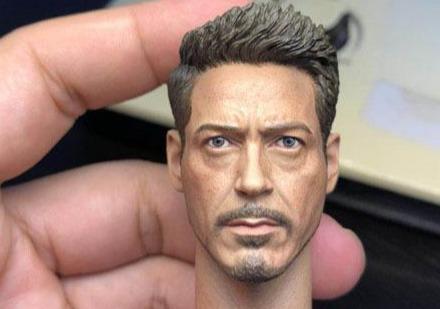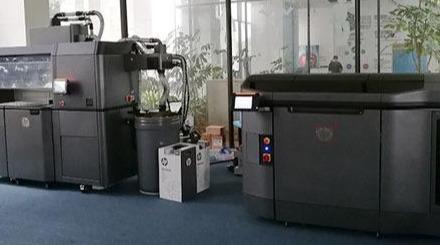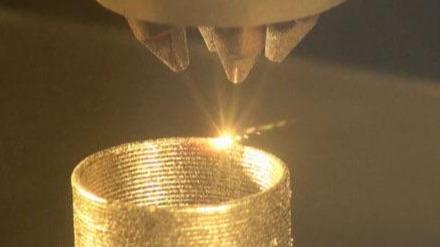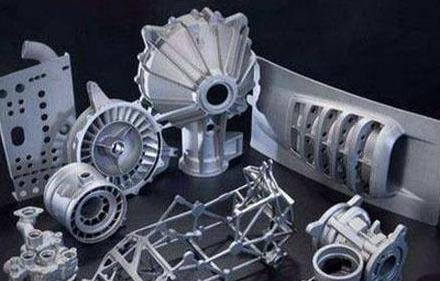In recent years, 3D printing rapid prototyping technology has emerged as a game-changing innovation, revolutionizing the way products are designed, developed, and brought to market. Also known as additive manufacturing, 3D printing has gained widespread popularity across various industries, from aerospace and automotive to healthcare and consumer goods. In this comprehensive blog post, we will explore the intricacies of 3D printing rapid prototyping technology, its applications, advantages, and how it has become an indispensable tool for businesses and inventors alike. As experts in the field, we bring you authoritative insights and a wealth of experience to understand the power and potential of this transformative technology.
I. Understanding 3D Printing Rapid Prototyping Technology: A Breakdown of the Process
At its core, 3D printing rapid prototyping technology is an additive manufacturing process that fabricates three-dimensional objects directly from digital designs. Unlike traditional subtractive manufacturing methods, which involve removing material from a solid block, 3D printing adds material layer by layer to form the desired object. The process begins with creating a digital 3D model using Computer-Aided Design (CAD) software, which is then sliced into thin cross-sectional layers. These slices serve as a blueprint for the 3D printer, which sequentially deposits material, typically plastic, resin, metal, or even biological material, to build the final object. This layer-by-layer approach enables the creation of complex geometries and intricate designs with high precision, making 3D printing rapid prototyping technology highly sought after in various industries.
II. Applications of 3D Printing Rapid Prototyping Technology: Transforming Diverse Industries
3D printing rapid prototyping technology has found widespread applications across a diverse range of industries, each benefiting from its unique capabilities. In the aerospace industry, 3D printing is used to manufacture lightweight and complex parts for aircraft and spacecraft, optimizing fuel efficiency and performance. Automotive companies leverage rapid prototyping for rapid design iteration, allowing for quick validation and testing of new concepts before mass production. In the medical field, 3D printing revolutionizes patient care through the creation of patient-specific implants, prosthetics, and surgical guides. Additionally, consumer goods companies employ rapid prototyping to accelerate product development and innovation, bringing new products to market faster and more efficiently. This versatility highlights the power of 3D printing rapid prototyping technology in transforming industries and driving innovation.

III. Advantages of 3D Printing Rapid Prototyping Technology: A Game-Changer in Product Development
The advantages of 3D printing rapid prototyping technology are manifold and contribute to its widespread adoption. One of the key benefits is the rapid turnaround time in the product development cycle. Traditional manufacturing methods can be time-consuming and costly, but with 3D printing, prototypes can be produced within hours, allowing for quick iterations and design refinements. This accelerated process reduces time-to-market, giving businesses a competitive edge and enabling them to respond swiftly to changing market demands. Moreover, 3D printing allows for the creation of functional prototypes, providing a tangible representation of the final product for testing and validation. The ability to touch, feel, and interact with the prototype ensures that potential design flaws or improvements can be identified and addressed early in the development process, minimizing costly errors and rework.
IV. Enabling Design Freedom and Complexity: Pushing the Boundaries of Innovation
3D printing rapid prototyping technology empowers designers and engineers with unparalleled design freedom and complexity. Traditional manufacturing methods often have limitations on the shapes and geometries that can be achieved, leading to compromises in product design. In contrast, 3D printing can produce virtually any shape or geometry that can be represented in a 3D digital model. This level of design freedom fosters creativity and innovation, allowing designers to push the boundaries of what is possible. Complex organic shapes, intricate lattice structures, and assemblies with interlocking components are just a few examples of what can be achieved with 3D printing rapid prototyping technology. This opens up new opportunities for product innovation and differentiation, providing businesses with a competitive advantage in the market.
V. Cost-Effectiveness and Waste Reduction: A Greener Approach to Manufacturing
Beyond its speed and design capabilities, 3D printing rapid prototyping technology also offers cost-effective benefits and waste reduction. In traditional manufacturing, producing prototypes or small production runs can be expensive, as it often requires custom tooling and setup costs. 3D printing eliminates the need for tooling, as each layer of the object is built directly from the digital model, making it highly cost-effective for small production runs and customized products. Additionally, 3D printing is an additive process, which means that it only uses the exact amount of material needed to build the object. This reduces material waste compared to traditional subtractive manufacturing, where excess material is often discarded. As sustainability becomes increasingly important in manufacturing practices, 3D printing rapid prototyping technology aligns with the goals of minimizing waste and resource consumption.

VI. Challenges and Future Prospects: Advancing the Potential of 3D Printing
While 3D printing rapid prototyping technology offers numerous advantages, it is not without its challenges. One notable limitation is the current range of materials available for 3D printing. While there is a wide selection of materials, including plastics, metals, ceramics, and resins, the properties of 3D printed materials may not always match those of conventionally manufactured counterparts. However, ongoing research and development in material science are continuously expanding the possibilities for 3D printing applications. Furthermore, the size limitations of 3D printers can restrict the production of large-scale objects. However, advancements in printer technology are pushing the boundaries in this regard, enabling the production of increasingly larger objects.
Looking to the future, 3D printing rapid prototyping technology holds immense potential for further advancements and transformative applications. As materials continue to improve, 3D printing is likely to expand into even more industries and applications, further disrupting traditional manufacturing methods. Additionally, advancements in multi-material printing and bioprinting hold the promise of even more innovative and diverse use cases. The integration of 3D printing with other emerging technologies, such as artificial intelligence and machine learning, could lead to autonomous and optimized design processes, further accelerating product development and innovation.
Conclusion:
3D printing rapid prototyping technology has undoubtedly transformed the landscape of product development and manufacturing. Its ability to rapidly create functional prototypes, offer design freedom, and drive cost-effective production has revolutionized industries across the board. The versatility of 3D printing, coupled with its potential for sustainability and waste reduction, aligns with the growing demand for more efficient and eco-friendly manufacturing practices. As we look to the future, the possibilities for 3D printing rapid prototyping technology are boundless. The continued advancements and innovation in this field will continue to shape industries, drive product development, and foster a new era of creativity and efficiency in the manufacturing landscape.

Frequently Asked Questions about “What Is 3D Printing Rapid Prototyping Technology?”
Q1: What is 3D printing rapid prototyping technology, and how does it differ from traditional manufacturing methods?
Answer: 3D printing rapid prototyping technology, also known as additive manufacturing, is a revolutionary process that fabricates three-dimensional objects layer by layer directly from digital designs. Unlike traditional manufacturing methods, such as subtractive manufacturing, where material is removed from a solid block to form the desired shape, 3D printing adds material only where it is needed. This fundamental difference enables the creation of complex geometries and intricate designs that were previously difficult or impossible to achieve with conventional manufacturing. Moreover, 3D printing rapid prototyping technology eliminates the need for custom tooling, making it highly cost-effective for small production runs and customized products. The speed and design freedom offered by 3D printing set it apart from traditional methods, making it a preferred choice for rapid product development and innovation.
Q2: What are the primary applications and benefits of 3D printing rapid prototyping technology in various industries?
Answer: The applications and benefits of 3D printing rapid prototyping technology span across diverse industries. In the aerospace sector, 3D printing is used to manufacture lightweight and complex parts, contributing to improved fuel efficiency and performance in aircraft and spacecraft. In the automotive industry, rapid prototyping enables quick design iterations, reducing the time and cost associated with traditional manufacturing processes. This technology has found significant use in the medical field, where it facilitates the creation of patient-specific implants, prosthetics, and surgical guides, enhancing patient care and outcomes. In consumer goods industries, 3D printing accelerates product development and innovation, enabling companies to bring new products to market faster and more efficiently. The advantages of 3D printing rapid prototyping technology lie in its ability to produce functional prototypes rapidly, allowing for quick testing, validation, and iteration. This shortens product development cycles, leading to reduced time-to-market and cost savings. Additionally, the design freedom provided by 3D printing fosters innovation, allowing manufacturers to create complex and unique products that meet evolving consumer demands.
Q3: What are the challenges and future prospects for 3D printing rapid prototyping technology?
Answer: While 3D printing rapid prototyping technology offers numerous advantages, it also faces some challenges. One significant challenge is the current range of materials available for 3D printing. While there is a wide selection of materials, each with specific properties, the material properties of 3D printed objects may not always match those of conventionally manufactured counterparts. As a result, some applications may require further research and development to identify suitable materials for specific use cases. Another challenge lies in the size limitations of 3D printers. Although advancements in printer technology are continuously expanding the possibilities, large-scale manufacturing of objects can still be limited. As the field of 3D printing continues to evolve, future prospects are promising. Ongoing research in material science is expected to lead to more advanced and diverse materials for 3D printing, widening the range of applications. Additionally, advancements in multi-material printing and bioprinting hold the potential for even more innovative and transformative applications. The integration of 3D printing with other emerging technologies, such as artificial intelligence and machine learning, could lead to autonomous and optimized design processes, further accelerating product development and innovation. As the technology continues to advance, 3D printing rapid prototyping is poised to become an indispensable tool for businesses, inventors, and manufacturers, shaping a more efficient, sustainable, and creative future for various industries.




